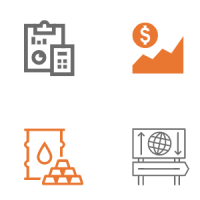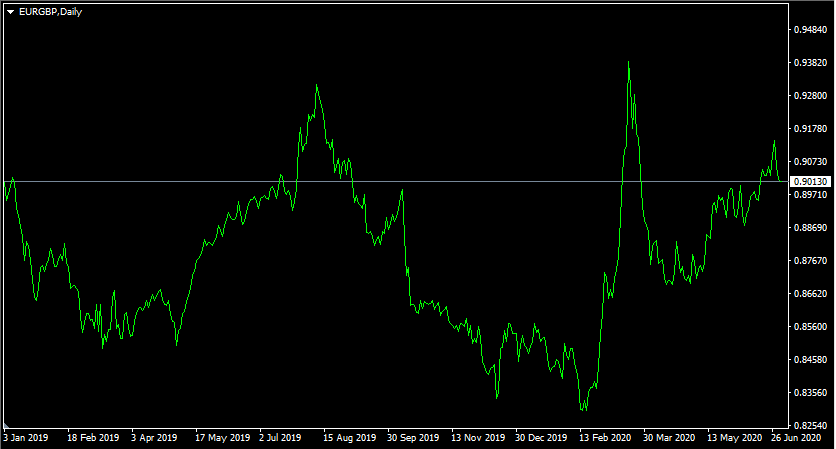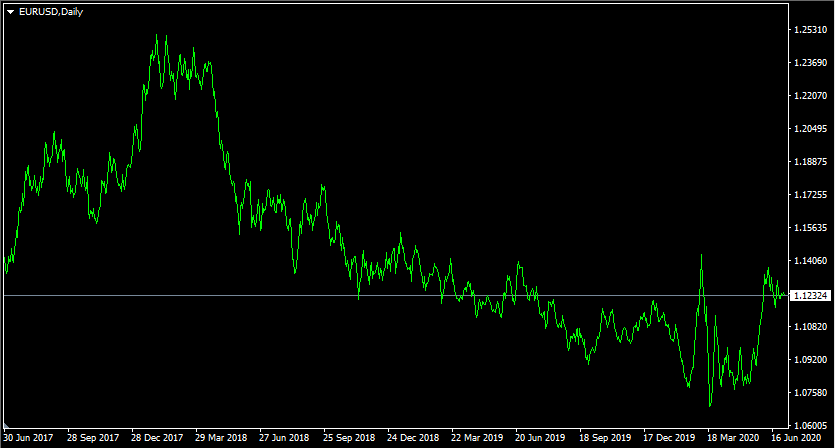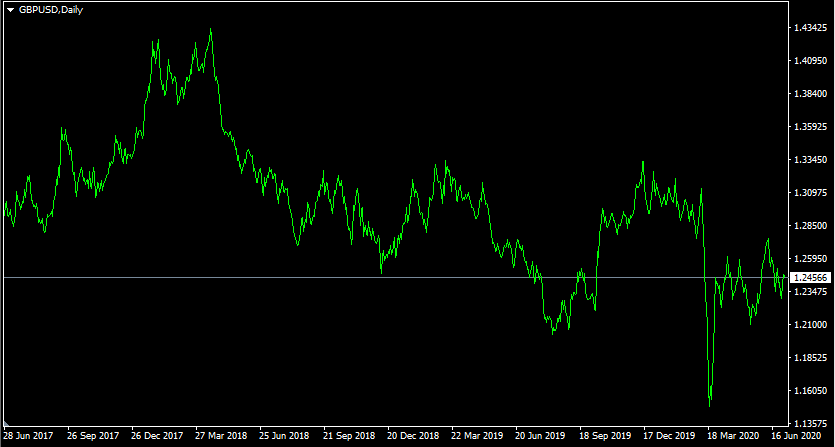Table of content
In Forex trading, market participants always try to reduce the percentage of losing trade, as well as the total volume of losses in general. There are dozens of methods and techniques to use in order to achieve this aim. One of the most popular ways professional experienced traders utilize is the use of hedging strategies.
Market participants employ those techniques in order to significantly reduce their risk exposure. Trading is always a risky business, therefore, anything which can potentially reduce the number of losses is always popular among traders.
Here it is worth mentioning that there is no one universally accepted Forex hedging strategy. Instead, we have several hedging strategies for Forex. The methodology of each of those is quite different and relies on different assumptions. In this article, we will discuss the 3 most essential FX hedging strategies that experienced traders use on a daily basis.
The first method involves the creation of a so-called ‘currency triangle’. The main idea behind this is the fact that from any set of 3 currencies, we can only have 3 currency pairs. Therefore, from USD, EUR, and GBP, we can construct EUR/USD, GBP/USD, and EUR/GBP pairs. With this technique, the trader takes one long and one short position for each currency. This means that in case of any scenario, the market participant will be well-positioned to protect his or her investments from unpredictable market swings.
The second technique does not necessarily involve the use of Forex hedging pairs. Instead, it involves the purchases of options. This gives a trader the right to buy or sell the currency pair at a fixed price for some period of time. Obviously, those instruments are not for free and market participants do have to pay some fees for this service. However, under the right circumstances, it can be one of the most effective hedging strategies Forex.
The third and final technique which we will discuss in this article is the use of Forex correlation hedging strategies. It goes without saying that the exchange rates of currency pairs, as well as some commodity prices, are highly correlated with each other. By taking opposite sides of those trades, traders can hedge their positions and protect their training accounts from potential losses.
Problems with Some Hedging Bets Strategies
Before moving on to the description of those 3 methods mentioned above, here it is important to discuss some misconceptions. In fact, people believe that Forex hedging meaning is that traders should open opposite positions with the same currency pair. Theoretically, this might be a very direct way for hedging bets in trading.
However, there are two problems with this assumption. Firstly, due to regulatory reforms in several major countries, it is simply impossible to do that. Just to bring one example, back in 2009, the US Commodity Futures Trading Commission banned this practice. The new regulations require Forex brokers to close down the previous trade if the client tried to open the opposite position.

The second obvious problem is that by default traders end up with a loss. Here it is worth remembering that for each currency pair, the broker applies spreads. For example, if the current market price of EUR/USD is at 1.1200, this does not mean that the market participant will be able to buy or sell this pair at this price.
What will happen instead is that the broker will publish the buy price of 1.1199 and sell a price of 1.1201. This means that even if traders were to be able to buy and sell this pair simultaneously, then they will end up with at least 2 pip loss by default. The issue here is the fact that regardless of the price movements market participants will be at a loss. The main point of trading Forex is to earn some potential payouts, rather than guarantee a small loss on a daily basis. Therefore this approach can be completely ineffective.
Risk Hedging Strategies with Currency Triangles
In order to avoid some of the downsides of the currency hedging methods, mentioned above, many professional Forex traders instead make use of currency triangles. To illustrate this better let us return to our earlier example of EUR/USD, GBP/USD, and EUR/GBP. As mentioned before, with this technique traders need to take one long and one short position for each currency. Here were have two examples of how to achieve this:
- Buy EUR/USD, Sell EUR/GBP and GBP/USD
- Sell EUR/USD, Buy EUR/GBP and GBP/USD
So let us suppose that after conducting some analysis, traders decided to choose the first option by buying EUR/USD and selling EUR/GBP and GBP/USD. In this case, if EUR/USD trade goes wrong and the US dollar appreciates, obviously on this one particular position traders will face some losses. However, at the same time, market participants will benefit from USD strength, because of the short GBP/USD position. They can also potentially earn some decent payouts from shorting the EUR/GBP pair, because of Euro weakness.
On the other hand, if EUR/USD rises substantially, traders will benefit from this move, since they already hold a long position on this pair. At the same time, they can also potentially earn some significant returns on a long GBP/USD position, because of the weakness of the US dollar.
So as we can see from this example, no matter where the market is heading, the losses with one position will be compensated by the gains from other trades. This is what makes this technique so popular. In fact, one can argue that the currency triangle hedging method is very close to being a no loss of Forex hedging strategies.
However, for the sake of accuracy, it is worth mentioning that it does not represent a no loss strategy for one reason. Here it is worth remembering that the broker spreads still apply here, so unless the trader makes up those losses by earning higher profits, he or she might end up in a small loss.
Yet, traders can quite easily avoid losses by one technique. They can simply wait for the overall direction of the market to become clear, close losing positions, and keep the winning ones open in order to earn higher returns. In this way, traders can end up with a net profit. Obviously, even this approach is not without its own risk, however, this can certainly put odds in favor of market participants.
Finally, it is worth mentioning that the use of those types of currency hedging strategies is completely legal in the US, as well as in other countries, and consequently is not a subject of any regulatory restrictions.
Forex Hedging Methods Using Options
Traders interested in hedging their position do have other tools available to them as well. One of the direct ways to achieve this is to simply purchase the options. This instrument gives a trader in exchange for a fee, a right, but not an obligation to buy a specified currency pair within a certain timeframe.
This means that options give the traders the ability to purchase or sell currencies at a fixed price, regardless of the current market price. However, one thing to keep in mind here is the fact that all options also have an expiry date attached to them, so they can not be used with an unlimited time frame.
For some practical examples, let us take a look at this daily EUR/GBP chart:

As we can see from the diagram above, the pair has experienced a great deal of volatility since 2019. In fact, the EUR/GBP experienced plenty of extremes, going as high as 0.94 in March 2020 and as low as 0.83 in February 2020.
So let us suppose that when the pair was trading at 0.9000 a trader decided to open a long EUR/GBP position and also purchased an option which allowed the market participant to close this trade at 0.8990. So when the rate dropped all the way down to 0.83, instead of suffering heavy losses, the treader could have used this option and cut his or her losses down to only 10 pips.
As we can see from this example, unlike other currency risk hedging methods, this strategy does not necessarily involve the opening of several positions. This can have two distinct advantages. Firstly, it lets traders to potentially minimize their expenditures on spreads. So market participants might pay very little attention to this. However, those types of expenses eventually can add up to a significant amount. Therefore, the fact that this technique allows traders to save money on those types of fees is a significant advantage.
The second benefit of this approach is the fact that it is much easier to manage 1-2 trades simultaneously, than 3 or 6 or more positions. Some experienced traders might be very comfortable with managing dozens of trades, however, for beginners, this can be a quite stressful experience. Therefore, this allows those market participants to hedge their positions without getting involved with many currency pairs.
One obvious downside of the use of options is that they do cost some fees. Depending upon the movements on the market, sometimes there might be no point in exercising them. Returning to our previous example with EUR/GBP long position at 0.9000, if the market rate immediately rose to 0.9500, then clearly it will make no sense to exercise the option at 0.8990. It is much better to take advantage of the current high market exchange rate and earn some payout in the process.
So as we can see options represent a kind of insurance in the case if the market goes in the opposite direction of a trader. Here essentially the market participant pays a fee in order to purchase an opportunity to limit his or her losses in case things go wrong. Therefore in some circumstances, it can be a very useful tool for Forex hedging purposes.
Finally, it is worth noting that the use of similar instruments is not limited only to Forex trading, but they can be used for Hedging in Finance. For example, businesses, which have exposure to foreign currencies often make use of futures to lock in favorable exchange rates and reduce their risk exposure due to currency fluctuations.
Foreign Currency Hedging Methods with Correlated Pairs and Commodities
Finally, we have Forex correlation hedging strategies. This might sound complicated, yet the main principles are quite simple indeed. When traders or financial experts say that currency pairs are correlated, it means that they tend to move in the same direction. Obviously it does not have to be a case of perfect correlation. The term does allow for some divergence. This is because many day to day events, like interest rate announcements, economic reports, and other types of news can disrupt normal trading patterns.
However, highly positively correlated currency pairs and commodity prices often are usually tied together for extended periods of time. To illustrate one obvious example of such a relationship, let us take a look at two charts. The first daily EUR/USD diagram represents the price action for the last 3 years:

The second daily chart displays the price developments of GBP/USD during the same period:

Now as we can see from those diagrams, both currency pairs have gone through 3 distinct periods. From late June 2017 until February 2018 was a period of US dollar weakness. As a result, the world’s reserve currency lost ground with most of its peers, with EUR/USD rising from $1.14 to $1.25, gaining 9.6% in the process. During the same period, GBP/USD also jumped from $1.29 to $1.42, posting a 10% gain in the process.
As we can observe from those charts, in February 2018, the bull market for those two European currencies came to a halt. Instead, the long uptrend of the US dollar began. The longevity of this trend was quite considerable, running from February 2018 until March 2020, so it lasted for more than 2 years. During this period, the EUR/USD pair has fallen from $1.25 to $1.07, which represents a 14.6% decline. At the same time, the GBP/USD also suffered some considerable losses, dropping from $1.42 all the way down to $1.14, the equivalent of a 19.8% decline, which is significant.
The final period began in April 2020, as the European currencies started to regain some of their recent losses. In the case of EUR/USD, the pair has risen back to $1.12 level, while at the same time the GBP/USD has climbed to $1.24. So as we can see despite those recent gains, the Euro and pound still trade lower than 3 years ago.
So as we can see from this example, the degree of correlation between EUR/USD and GBP/USD is very considerable and traders can certainly use this fact for hedging purposes. However, it is worth mentioning that unlike the currency triangle, the correlation hedging strategy does not always protect traders from market swings. This is because as mentioned before, interest rate changes, economic data releases, and other events do have the potential to disrupt normal trading patterns in the market.
Types of Hedging Strategies with Commodity Prices
Before moving on to concluding remarks it is worth noting that the correlation trading strategies are not strictly limited to currency pairs. In fact, there is a certain distinct relationship between commodity prices and some currencies.
For example, the price of oil usually has a significant impact on the exchange rates of the Canadian dollar and Russian ruble. This is because both Russia and Canada are the world’s major exporters of oil products. As a result, their respective economies tend to benefit from rising prices of this commodity, since it leads to higher profits for their companies and revenues from their governments. Therefore very often CAD and RUB tend to move in the same direction as oil prices.

Here it is worth noting that besides the positive correlation, there is also such a thing as the negative correlation. This term represents securities that tend to move in towards opposite directions. Therefore for understandable reasons, USD/CAD and USD/RUB tend to have a strong negative correlation with oil prices. Therefore traders can also utilize hedging strategies by buying USD/CAD and Crude oil at the same time. Or alternatively, sell USD/CAD and buy securities tied to oil. In this scenario, the losses in one position will be offset by the gains in other trades.
It goes without saying that there are many other examples of the correlation between currencies and commodity prices. For example, the Australian dollar most of the time has a notable positive correlation with the Gold prices. As the world’s one of the largest producers of precious metals, the Australian economy can certainly benefit from the rising prices of this commodity. Therefore, AUD tends to move in the same direction as XAU/USD. Therefore, traders can hedge their positions by opening a long AUD/USD and short gold trade.
Here it is worth mentioning that there can be periods when the relationship between two securities might be temporarily broken. For example, from late 2019 until late Spring 2020, AUD kept falling regardless of rising gold prices. The reasoning behind this was the fact that during this period the Reserve Bank of Australia has cut its rates repeatedly, reducing its cash rate from 1.50% to 0.25%. As a result, the Australian dollar became less attractive for savers and investors and predictably, the currency fell significantly. However, once the situation stabilized, the AUD once more became positively correlated with gold prices.
In fact, some experienced traders and financial experts also point at the fact that the Swiss franc has a notable positive correlation with the prices of precious metals. Switzerland is not a major producer of those types of commodities. However, the country has one of the largest gold reserves in the world. Therefore, if the price of this commodity rises, the buying power of those reserves increase as well, which can certainly benefit the Swiss franc.
Finally, we have a strong correlation with the New Zealand dollar and dairy prices. New Zealand is one of the largest producers and exporters of dairy products in the world. Therefore, when the prices of those commodities rise, many local companies benefit from rising profits, while the local government can certainly benefit from rising tax revenues.
Forex Hedging Strategies: Definition and Uses – Key Takeaways
- Forex hedging strategies involve methods which help traders to reduce their risk exposure and also reduce their potential losses in the process. One simple way to achieve this is to take all 3 possible currency pairs composed of 3 currencies and open one long and one short position with each of them. This can protect a trader’s trading account from any unexpected market swings. This is the most direct and legal hedging method traders can use.
- Many traders use options for hedging purposes. This type of contract, in exchange for a fee, gives an individual a right, but not an obligation, to buy or sell a given currency pair at a fixed price for some predetermined period of time. As a result, if the market goes to the opposite direction of a trader’s position, he or she will be in a position to exercise this option and significantly reduce the potential losses. So essentially options represent some sort of insurance policy against the unexpected market movements.
- Some currency pairs and commodities are positively or negatively correlated with each other. Therefore, traders have an option to open one long and one short position with positively correlated securities. Alternatively, market participants can open two long or two short positions with two negatively correlated pairs. In all of those cases, it is highly likely that losses with one security will be compensated by the profits from the other one. Therefore, this can be a very effective method of hedging currency positions against possible unexpected market swings.



